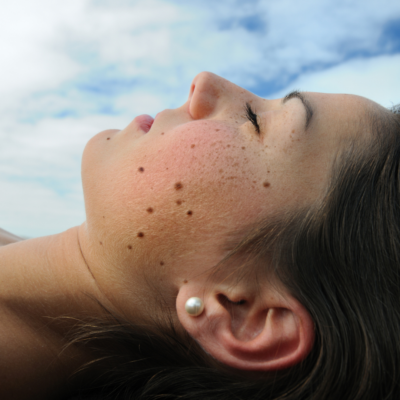Glycolic Acid Peel
At California Skin Institute, our aestheticians use the glycolic acid peel to help clients achieve smoother, more radiant skin with less downtime and without crusting or visible peeling of the skin. The glycolic acid peel is intended more as a skin upkeep treatment option; to assist the skin’s natural shedding cycle and as a way to minimize breakouts, by helping to cleanse pores. Depending on your unique situation, this treatment may be combined with other chemical peels to maximize exfoliation at the surface level of the skin, while delivering stronger chemicals to deeper layers in order to stimulate collagen production.
How it Works
The glycolic acid peel is meant to show improvement gradually. If you have never had this treatment before, the most dramatic improvement will appear after several treatments. From that point forward, the glycolic acid peel can be used as an upkeep measure to assist your natural skin cycle with shedding dead cells and clearing out your pores.
When you visit California Skin Institute for a glycolic acid peel, one of our aestheticians will thoroughly cleanse your face to remove any dirt or oil buildup. This is essential to ensure that the acid can penetrate the skin evenly. If possible, please avoid makeup on the day of the procedure.
After the skin is cleansed, your aesthetician will gently apply the glycolic solution to your face using a special pad or a sponge. The strength of the solution will depend on whether you’ve had this peel before and how well your skin can tolerate it. It is common for clients to experience a mild discomfort and a tingling sensation while the glycolic acid solution is on the skin.
The amount of time the acid is kept on your skin will depend on your sensitivity and how your skin reacts. However, the time usually falls in the 1-10 minute range. Thereafter, the aesthetician will apply a special solution to your face to neutralize the glycolic acid peel, and will proceed with any other additional treatments, or apply a moisturizing lotion to help soothe your skin.
Ingredients in Glycolic Acid Peel
The main ingredient in this peel is glycolic acid, which is part of a group of skin care ingredients called
‘alpha hydroxy acids,’ or AHA’s. This group also includes chemicals like citric acid, lactic acid, and malic acid. Glycolic acid is derived from sugar cane.
What the Glycolic Acid Peel Treats
The glycolic acid peel is not meant to address severe sun damage or deep wrinkles in the same way that a TCA peel would. Glycolic peels are meant to have less downtime, and help resurface your skin gradually, to avoid excessive crusting or peeling of the skin.
With regular use, the glycolic acid peel can reduce the appearance of wrinkles, lighten scars and hyperpigmentation. It can also reduce the occurrence of breakouts, as in addition to exfoliating the skin, glycolic peels also clean out pores.
Recovery Time
After a glycolic acid peel, your skin may be slightly red and sore. However, this will subside within a few hours. You may notice very light peeling for a few days after the treatment, though it is likely to be virtually invisible to the naked eye, as most of the dead skin will be removed during your regular skin cleansing routine.
Because of such short recovery times and virtually no signs of peeling or flaking, the glycolic acid peel can be performed at almost any time, without needing to make significant plans for recovery. However, to be on the safe side, you may want to give your skin adequate time to recover from any potential irritation and not perform this treatment shortly before a major event or party.
Disclaimer
Treatment results will vary, talk to a practitioner to see if this treatment or procedure is right for you.




 / 291 Reviews
/ 291 Reviews